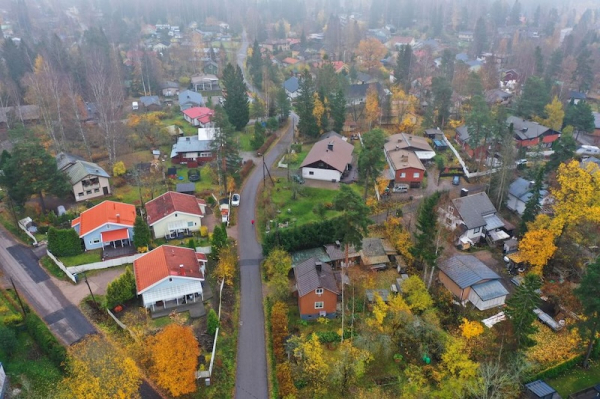
HSY measured the effects of wood burning in the Päiväkumpu residential area in 2024. Photo: HSY / Tero Pajukallio
- Next Article Mars art installation brings war and peace theme to Helsinki Cathedral
Air quality measurements in 2024 show that fine particle pollution remains high in several detached housing areas across the Helsinki region, despite a long-term decline over the past 15 years. According to the Helsinki Region Environmental Services Authority (HSY), pollution levels are still close to the limits set to take effect in 2030. Proper wood burning techniques can help reduce emissions and health risks for local residents.
HSY measured concentrations of benzo(a)pyrene, a pollutant produced by incomplete combustion, at six locations in the Helsinki metropolitan area and in Karkkila. The highest levels were recorded in Päiväkumpu, Vantaa, while the lowest were found in Vartiokylä, Helsinki. Other monitored areas, including Tapanila, Lintuvaara, and Karkkila, fell between these extremes.
Saija Korhonen, air protection expert at HSY, said that while pollution levels have decreased over the past 15 years, they remain a concern.
“Some residential areas are approaching the current target level of 1 nanogram per cubic metre, which will become a legally binding limit in 2030,” she said.
Air pollution from wood burning varies between and within neighbourhoods. The location of measurement stations also affects readings, as emissions from nearby houses can significantly impact results. Weather conditions, such as mild winters, also play a role by reducing the need for additional heating.
Wood burning causes spikes in fine particles, black carbon, and benzo(a)pyrene concentrations, especially during winter evenings. On calm, freezing nights, pollution levels in residential areas can exceed those recorded in high-traffic zones during rush hour.
“We have observed the highest concentrations during windless, cold weather, when smoke lingers in the air people breathe,” Korhonen said.
Residents can significantly lower emissions by using proper wood burning techniques. Poor combustion produces far more pollutants compared to burning dry wood in an efficient fireplace. Since emissions occur in populated areas, they directly affect air quality in neighbourhoods.
“Everyone can influence how cleanly their fire burns. Only dry, untreated wood should be used—never waste. Upgrading to a low-emission fireplace is another way to reduce pollution,” Korhonen advised.
Benzo(a)pyrene and other polycyclic aromatic hydrocarbons (PAHs) are produced by incomplete combustion, with elevated levels found in areas where wood heating is common. PAHs are known to increase cancer risk, while fine particles can penetrate deep into the lungs and are particularly harmful to children, the elderly, and people with respiratory or heart conditions.
Black carbon, or soot, is released into the air from incomplete combustion. In the Helsinki region, key
Source: www.helsinkitimes.fi
